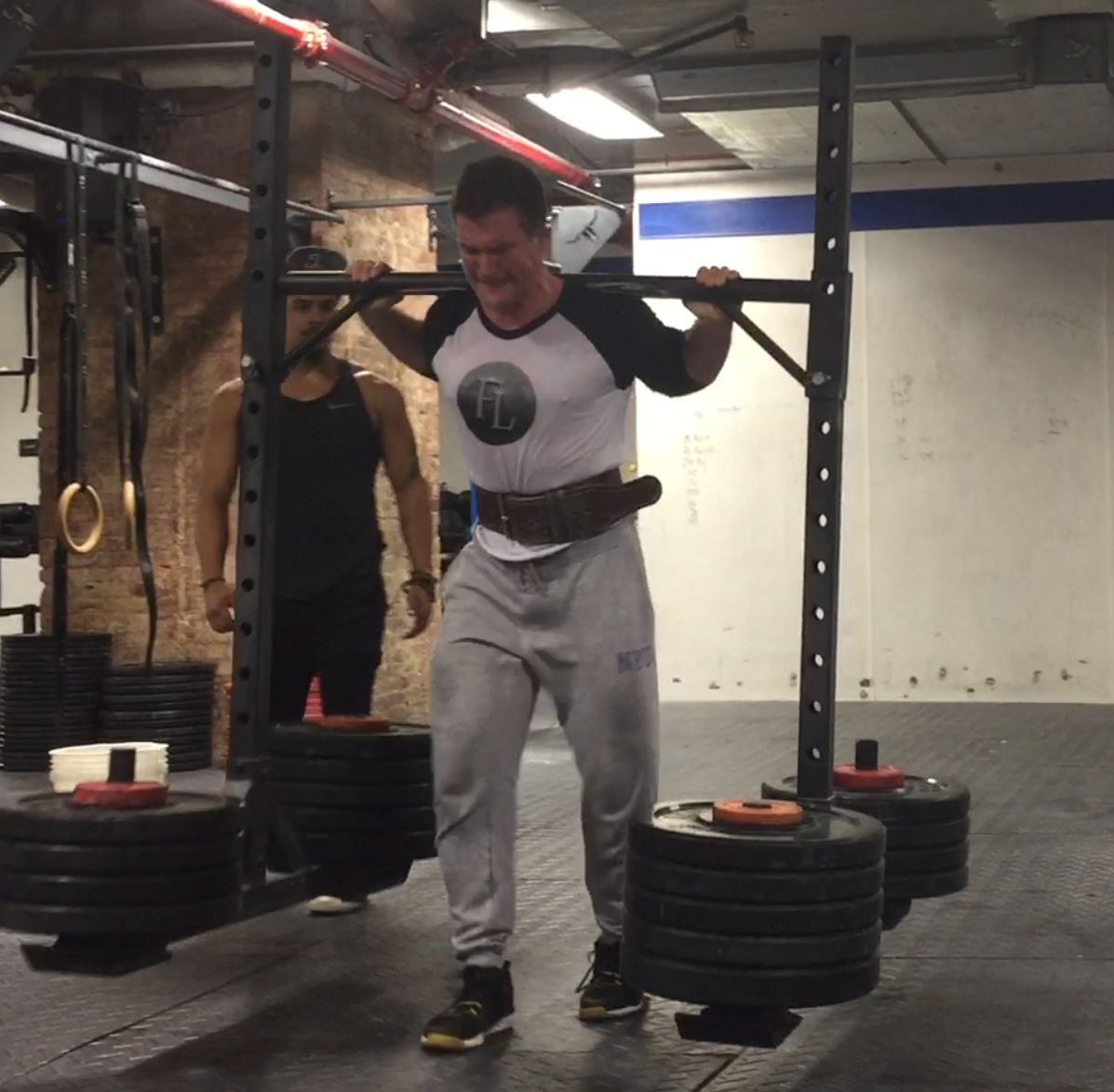Strongman training can offer the average gym goer the opportunity to diversify their strength potentials in varying, highly functional movement patterns and positions. For lifters with minimal strongman and/or athletic movement background, strongman training may help to increase neural drive, increase motor neuron recruitment, and develop a well-rounded strength and power athlete.
While many gyms today may lack the specific equipment, space, and expertise needed to properly train strongman specific movements, lifters looking to diversify their strength and fitness can still incorporate these four fundamental strongman movements.

Therefore, in this article we will uncover the benefits of adding these four fundamental strongman movements into your workouts and how to program them effectively based upon your goals.
Single-Arm Clean and Press / Snatch
This unilateral version of the Olympic lifts is a great tool to develop raw strength, movement, and grip/back strength. By training unilaterally, either with maximal/near-maximal loading (strength and hypertrophy) and/or lighter loads (medleys and circuits) lifters can reap all the benefits that unilateral training has to offer.
How to Program
Coaches and athletes can be creative in the programming of this move. If they are looking for more strength and hypertrophy, lower reps with higher to near maximal loads could do the trick, whereas lighter loads can be a great for increasing work capacity during medleys and circuits.
Loaded (Yoke or Barbell) Walks
While many gyms may not have yoke racks (if you do, start using them), many lifters can substitute barbell-loaded walks (front or back racked) to elicit similar benefits as the yoke walk. For many lifters, increased time spent under a heavy (sometimes maximally loaded barbell) will require increase intra-abdominal strength, bracing, and maximal neurological recruitment, all of which can then be transitioned to squats, presses, and pulls. By implementing these near-maximal (or maximal) open-chained movements, lifters can increase neural drive, increase their ability to brace, and stimulate muscular growth throughout the back, hips, and traps worthy enough to demand a new personal record squat/pull.
How to Program
Many beginners should start with learning how to walk-out maximal and supra-maximal loads before attempting to walk while under a loaded barbell. The ability to create absolute rigidity throughout the torso is vital for spinal health. When walking, focus on smooth movements, either dropping and repeating at the end of a walk, or when able to, make wide turns to minimize spinal rotation. Additionally, lighter loads can be used for longer walks to build a lifter’s abilities for more advanced training.
Farmers and Suitcase Carries
If you haven’t read about the immense benefits of loaded carries you may be missing out on optimal neurological performance and stellar grip strength. For many lifters, gyms are well stocked with heavy dumbbells or objects, making farmers (load in both hands) and suitcase (unilaterally loading) fast and effective loaded carry options. The ease of setup and wide availability of heavy dumbbells makes this fundamental strongman movement a great option for nearly every lifter and athlete at most gyms around the globe.
How to Program
There are a few variables that you can manipulate to program farmers/suitcase carries into your workouts. You can try to carry loads for a given distance or time duration, changing the loads based upon goals. If you are looking to add maximal strength, you could do shorter, heavier carries of anywhere between 10-30 seconds, whereas walks that are 30-90 seconds would do a greater job at creating muscular hypertrophy and grip strength due to increased time under tension/loading. Lastly, you can program these into warm-ups and/or corrective segments to increase scapular stabilization and even improve one’s posture.
Pulling from Various Heights and Grips
Lifting, pulling, and deadlifting are fundamental movements as humans. As upright species, we should to be able to grip various odd object at various starting heights to be able to maximize our pulling potential. Many lifters can perform rack pulls in standard gyms, pulling from various pin heights to address specific sticking points throughout fuller versions of a pull. Additionally, exploring different pulling movements with fat gripz, fat bar, wide snatch grips, and other odd single armed objects will only diversify maximal strength potentials.
How to Program
Programming these as assistance lifts, part of heavier effort strength moves, or during strength circuits can all lead to progress in overall strength and movement. When programmed responsibly, these variations can be used to increase grip strength, maximal strength, and even be used in medleys.
Final Thoughts
This goes to show you that you can reap some of the benefits of strongman-based training in most gyms around the globe. Coaches and athletes can be creative when programming these into their current training cycles, and should always use caution when using heavier loads and/or exploring new movements.
Editors note: This article is an op-ed. The views expressed herein are the authors and don’t necessarily reflect the views of BarBend. Claims, assertions, opinions, and quotes have been sourced exclusively by the author.
Featured Image: BLACKDAY/Shutterstock